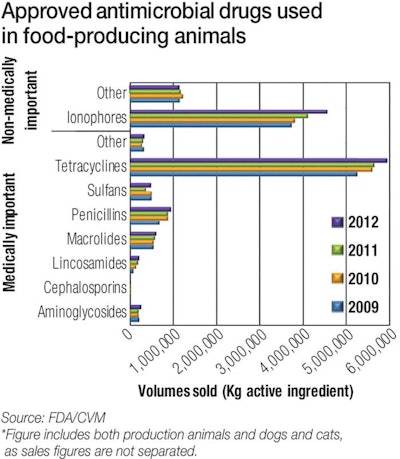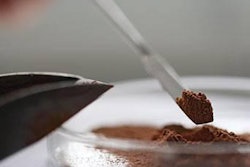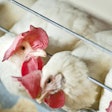For nearly 60 years, U.S. producers successfully targeted subclinical animal infections with antimicrobial growth promoters (AGPs). Year-on-year, sales of active antimicrobials have increased, reaching 14,600 metric tons in 2012 (Figure 1). However, recent legislative changes have forced producers to adopt new husbandry strategies, with the FDA and U.S. pharmaceutical companies removing “dual licences” in 2013. The latter allowed antimicrobials to be used in medicine and agricultural growth promotion.

FDA/CVM | This table displays approved antimicrobial drugs used in food-producing animals by medical importance and drug class, 2009 to 2012.
Beginning in 2017, only non-medical antimicrobials will remain, with use in animals requiring veterinary authorization. Concerns over antimicrobial gene resistance, increasing environmental pollution levels and negative consumer opinion have driven this change.
“Consumers are very important in driving industry changes, as they also have great political power,” notes Jens Noesgaard Jorgensen, Chr Hansen’s Global Swine product manager.
Consumer-driven change is a powerful influencer, and large companies including Walmart, Tyson Foods and McDonald’s Restaurants have publicly requested their meat and poultry suppliers remove AGPs by 2017. Perdue Farms already uses veterinary-prescribed antimicrobials in its flocks only to treat disease, and Cargill will completely remove AGPs from turkey feeds by the end of 2015.
Investment in strain innovations drives progress
As U.S. feed manufacturers re-evaluate their options, probiotics may represent one of the best technical additives with potential to ‘step-up’ as replacements. At only 2 percent of the global human probiotics market, Bacterial Feed Probiotics are relatively under-developed at US$580 million in value, growing around 10 percent year-on-year in 2015 (Markets & Markets and Novozymes). Developmentally, the North American market currently lags behind Asia Pacific and Europe.
Large probiotic manufacturers also harness functionality from other additives, particularly enzymes. Probiotics primarily act to maintain a stabilized balance of gut micro-organisms, preventing the overgrowth of species which may cause sub-clinical inflammation. This helps maintain gut integrity and functionality, ensuring the best possible digestion.
Feed probiotics constitute highly specialized market and technical challenges — include maintained viability. Human food supply chains can maintain chilled-storage temperatures easily until the point of consumption, but the feed production environment makes this impossible. Some probiotics, such as Lactic Acid Bacteria (LAB), depend on sophisticated encapsulation methods to ensure their survival.
The largest companies are innovating with spore-forming Bacillus spp., which can withstand oxygen as obligate or facultative aerobes, being derived from soil and environmental sources.
“Bacillus spp. are selected to survive processing, pelleting temperatures, transport and storage, giving a good shelf-life in feed,” explains Robert Lantz, monogastric business manager, Chr Hansen’s North American. “When exogenous enzymes are added to diets, the highest level of enzymatic activity available to the pig is during feed mixing. Potential loss in activity may then occur through pelleting, transportation and storage procedures, and also passage through the pig’s stomach. By contrast, Bacillus’s enzymatic potential is at its lowest when added to the feed, as it continues to increase as the bacteria passes from the stomach to the small intestine.”
In addition to Bacillus spp., Enterococcus spp. strains are also popularly used as feed probiotics.
In pigs, the biggest economic impact of removing AGP will likely be felt in grower-finisher pig production, where probiotics could potentially reduce diet formulation costs while maintaining performance.
“Probiotic supplements have consistently supported North American nursery pig performance for over 20 years, and sales are growing well in poultry,” Lantz says. “As alternatives to antimicrobials are evaluated, interest in probiotics has certainly increased.”
Company probiotic innovations and investments
Feed additive combinations must be complementary, and probiotics-enzymes represent one such option. Probiotics markets attracted new investment in 2014, when Danish enzyme giant Novozymes announced its diversification and a partnership with Adisseo to build a probiotics business within 5 to 10 years.
Chr Hansen and DuPont have been highly active innovators. Chr Hansen positions its BioPlus YC as selected Bacillus spp. strains producing high quantities of enzymes to improve fiber digestibility in pigs from farrow to finish. Chr Hansen claims the probiotic offers consistently higher efficacy in maintaining gut health and performance than exogenous enzymes given to older pigs, or those fed corn-based diets.
In early 2014, DuPont launched its heat-resistant Syncra AVI, to combat undigested nutrients. Containing xylanase, amylase, protease and a multi-strain Bacillus spp., Syncra AVI improves dietary fiber, starch and protein digestibility and Apparent Metabolizable Energy (AME) availability for birds, while removing non-starch polysaccharides and lectin anti-nutrients. The extra protein released is available to broilers and helps prevent overgrowth of undesirable species such as Cl. perfringens.
Since 2012, Advanced BioNutrition Corp. has invested in developing patented delivery technologies, to stabilize and protect probiotics within fish and shrimp diets, and to deliver vaccines for salmonids.
DSM offers its Enterococcus faecium-based Cylactin, combined with other proprietary ingredients including plant extracts and benzoic acid. Smaller companies offer enzyme-based technologies, such as Dadic International Inc.’s C1 fungal gene expression technology used in Protease AP and AlphaStar.
In April 2015, Latvia’s Agricultural University filed a patent for a synbiotic based on Pediococcus pentosaceus and Jerusalem artichoke, to improve laying hen performance and egg quality.
Are dual-strain products the future?
Compared with single-strain products, probiotics featuring two or three bacterial strains may offer greater reliability, especially if these have different functions or growth patterns.
“Dual-strain probiotics support bacterial growth to degrade maximum amounts of feed into absorbable molecules, while supporting epithelial cell wall transport mechanisms, to encourage improved gut integrity and nutrient transportation into an animals’ body – generating economic and welfare benefits,” Jorgensen says. “The science of studying microbial communities and nutrition is relatively young, but developing quickly. New discoveries will help us improve and develop probiotics – we are currently at a stage where we can help the gut function better.”
In conclusion, a sustained focus on probiotics for immunity, cell integrity and gut health should help improve product reliability in young and growing animals. These natural feed additives are rising in significance, and, if judiciously managed, could stabilize gut health in animals raised in AGP-free or AGP-reduced environments.














